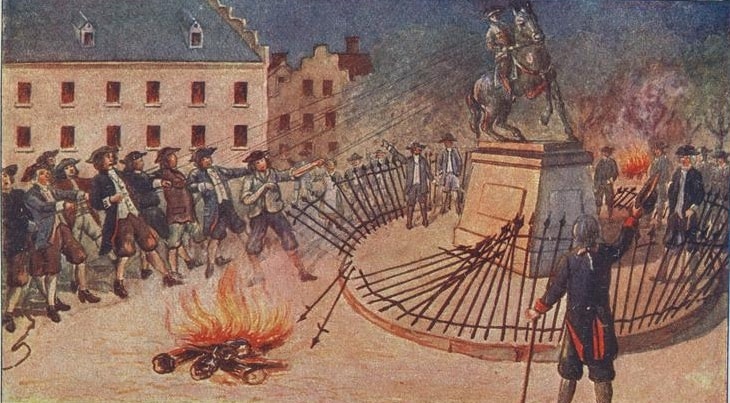
ADVERTISEMENT - CONTINUE READING BELOW
27. New York’s importance in the American Revolution
New York City became the main British military base in North America, the headquarters of their high command, and their administrative center. In addition to being vital to commerce, New York’s central position made it a key strategic point. It had one of the best anchorages in the American Colonies, and its harbor usually looked like a forest of masts from all the sailing vessels that came, docked, and went. It was also conveniently located relatively close to Philadelphia, capitol of the insurgents and a locale they were bound to try and defend. As a result, the region between and surrounding Colonial America’s two greatest cities saw the most intense and concentrated military activity of the war. It was similar to what happened in the area between Washington and Richmond in the American Civil War generations later.
New York City was thus bound to become a hotbed of espionage. Compared to the Patriots, the British already had the deck heavily stacked in their favor, with a vast disparity in professional troops, materiel, and resources that the rebels could not hope to match. Advance notice of British intentions and an insight into their plans could go a long way to reduce the impact of that disparity. To stay informed about what the British were up to in New York was extremely important to the Patriots. Their chief general, George Washington, deemed the collection of intelligence from there a vital task upon which the success or failure of the entire war effort might depend.

